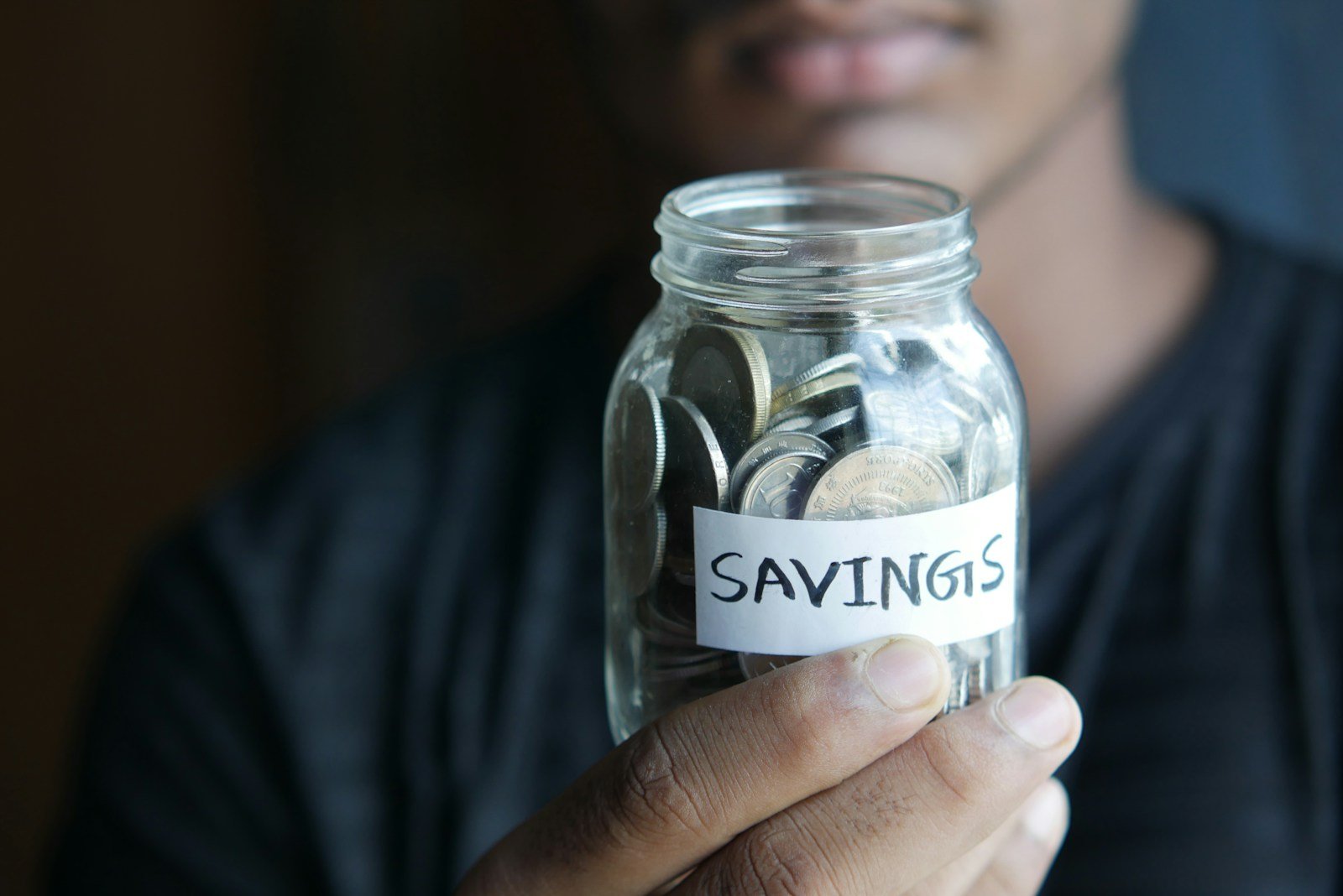Picture this: It’s three days before payday, you’re eating ramen for the third night in a row, and you just got a notification that your credit card payment is due. Sound familiar? Trust me, I’ve been there! In fact, a shocking 64% of young professionals live paycheck to paycheck, but here’s the good news – it doesn’t have to be this way.
Hi there! I’m about to share a complete budgeting guide that won’t have you crying into your spreadsheets or feeling like you need an economics degree. Whether you’re tired of that end-of-month panic or just want to finally afford that dream vacation without selling a kidney, you’re in the right place.
Think of this as your financial GPS – we’ll get you from “where did all my money go?” to “wow, I actually have savings!” And the best part? You can start right now, regardless of your current financial situation. No judgment, just practical solutions that actually work in the real world.
Ready to take control of your finances? Let’s dive in! (And yes, you can still keep your daily coffee habit – I’ll show you how!)
What is Budgeting (And Why It Actually Matters)
Let’s start with a truth bomb: budgeting isn’t about punishment or deprivation. Forget everything you’ve heard about cutting out every single joy in your life! Modern budgeting is more like being your own money coach than your parents’ stern accountant.
The Real Deal About Budgeting
You know how your phone has a GPS? Well, a budget is basically a GPS for your money. It’s not about restricting you – it’s about helping you get where you want to go. In its simplest form, budgeting is just telling your money where to go instead of wondering where it went.
Why Should You Care? (Besides Avoiding Ramen Forever)
Let me paint you a picture of what good budgeting can do:
- Financial Independence (aka Adult-ing Like a Pro)
- No more calling parents for emergency cash
- Freedom to make career moves without panic
- Ability to say “yes” to opportunities without checking your bank balance first
- Emergency Preparedness (Because Life Loves Surprises)
- That unexpected car repair? Handled.
- Sudden job transition? You’ve got a buffer.
- Medical emergency? You’re covered.
- Goal Achievement (Dreams → Reality)
- Want to travel? There’s a plan for that.
- Dreaming of your own place? Let’s make it happen.
- Thinking about starting a side hustle? We’ll budget for it.
- Stress Reduction (Priceless!)
- Sleep better knowing your bills are covered
- End the paycheck-to-paycheck cycle
- Stop playing “dodge the bank fees”

Here’s a shocking stat for you: A recent study found that 76% of millennials who follow a budget report lower stress levels and better mental health. Who knew spreadsheets could be better than therapy? (Okay, maybe not better, but definitely cheaper!)
The Modern Approach to Budgeting
Forget the image of your grandparents tracking every penny in a leather-bound ledger. Today’s budgeting is:
- Flexible (because sometimes you need that extra coffee)
- Digital (apps that do the heavy lifting)
- Personalized (because your friend’s budget won’t work for you)
- Actually kind of fun (yes, really!)
Getting Started: The 3-Step Budgeting Framework
Remember when you tried following that complicated recipe with 20 ingredients and gave up halfway through? Well, I’m not going to do that to you with budgeting. Instead, let’s break it down into three digestible steps that even your cat could understand (though I wouldn’t trust them with your credit card).
Step 1: Track Your Income (The Fun Part!)
Let’s start with the money coming IN before we worry about the money going OUT. And yes, we’re counting every dollar – even that random $20 your aunt sends you for your “coffee fund.”
Calculate Your Monthly Take-Home Pay
First things first: how much actually hits your bank account after taxes and deductions? This is your baseline.
Income Tracking Template
| Income Source | Weekly | Bi-Weekly | Monthly |
|---|---|---|---|
| Main Job | $ | $ | $ |
| Side Hustle | $ | $ | $ |
| Other | $ | $ | $ |
| Total | $ | $ | $ |
Pro Tip: If you’re paid bi-weekly, don’t forget about those magical three-paycheck months! They’re like finding money in your jacket pocket, but better.
Dealing with Irregular Income
Freelancer? Gig worker? Commission-based? I see you, and I’ve got you covered! Here’s how to budget with variable income:
- Find your “minimum reliable income” (the least you typically make)
- Create a “stability fund” during good months
- Use percentages instead of fixed amounts
Don’t Forget the Side Action
- Etsy shop? Count it.
- Weekend dog walking? Add it.
- That one time you sold your old phone? Maybe not.
Step 2: Categorize Your Expenses (The Eye-Opening Part)
Now for the part that might make you want to pour a glass of wine – looking at where your money actually goes. But trust me, this is where the magic happens!
Fixed Expenses (The Non-Negotiables)
These are your “adulting” expenses:
- Rent/Mortgage (your castle payments)
- Utilities (because Netflix needs electricity)
- Loan Payments (goodbye, student debt!)
- Insurance (because life happens)
Variable Expenses (The “It Depends” Category)
This is where things get interesting:
- Groceries (yes, takeout counts)
- Entertainment (because Netflix alone isn’t enough)
- Shopping (those “necessary” purchases)
- Transportation (including those late-night Ubers)
Savings and Investments (Future You Will Thank You)
Think of this as paying your future self:
- Emergency Fund (aim for 3-6 months of expenses)
- Retirement Contributions (compound interest is your BFF)
- Specific Goal Savings (vacation fund, anyone?)
Step 3: Choose Your Budgeting Method (Pick Your Fighter)
Now for the fun part – choosing how you’ll actually track all this! And no, stuffing receipts in a shoebox doesn’t count as a method.
Comparison of budgeting methods
| Method | Best For | Effort Level | Tech Required |
|---|---|---|---|
| 50/30/20 | Beginners | Low | Basic |
| Zero-Based | Detail-Lovers | High | Medium |
| Envelope | Overspenders | Medium | Optional |
| App-Based | Tech-Savvy | Low | High |
The 50/30/20 Rule (The Beginner’s BFF)
Think of this as the “training wheels” of budgeting:
- 50% for needs (the must-haves)
- 30% for wants (the nice-to-haves)
- 20% for savings (the future-you-will-thank-you-haves)
Zero-Based Budgeting (For The Spreadsheet Enthusiasts)
Every dollar gets a job – like assigning seats at a wedding, but with money:
- Income minus expenses equals zero
- Perfect for control freaks (I say with love)
- Great for variable income
The Envelope System (Old School Cool)
Digital or physical envelopes – your choice:
- Separate spending categories
- When it’s gone, it’s gone
- Great for visual learners
App-Based Tracking (Welcome to 2025!)
Let technology do the heavy lifting:
- Automatic transaction categorization
- Real-time spending alerts
- Pretty graphs (because who doesn’t love pretty graphs?)
Essential Budgeting Tools for Beginners
Listen up, because I’m about to share the digital equivalent of having a personal financial advisor (minus the fancy office and expensive fees). These tools are like having a responsible friend who actually enjoys math – they’ll keep you on track without judging your late-night Amazon purchases.
Banking Apps (Your Financial Command Center)
Most banks have finally entered the 21st century with apps that actually work! Look for these features:
- Real-time balance updates (no more mental math at checkout!)
- Spending categorization (so you can see exactly how much you spent on tacos)
- Bill payment reminders (because adulting is hard enough)
Pro Tip: Enable notifications for large purchases. Your future self will thank you when that “small splurge” turns out to be a subscription you forgot about!
Top 3 Budgeting Apps Worth Downloading
- Mint (The All-In-One Champion)
- Cost: Free (yes, really!)
- Best for: Getting the big picture
- Killer feature: Automatic bill tracking
- Warning: Might make you oddly excited about pie charts
- YNAB (You Need A Budget)
- Cost: Subscription-based
- Best for: Zero-based budgeting devotees
- Killer feature: Real-time budget adjustments
- Warning: Might turn you into a budgeting evangelist
- Personal Capital
- Cost: Free for budgeting features
- Best for: Investment-minded folks
- Killer feature: Investment portfolio analysis
- Warning: The graphs might make you feel like a Wall Street pro
Basic Spreadsheet Templates (For the DIY Crowd)
Sometimes simple is better! Here’s what your spreadsheet should include:
Basic Budget Template Structure
| Category | Planned | Actual | Difference |
|---|---|---|---|
| Income | $ | $ | $ |
| Fixed Expenses | $ | $ | $ |
| Variable Expenses | $ | $ | $ |
| Savings | $ | $ | $ |
Expense Tracking Tools (The Reality Check Department)
Because sometimes you need to know exactly where that “missing” $300 went:
- Receipt scanning apps (goodbye, paper clutter!)
- Automatic bank feed connections
- Custom category creation
- Expense splitting features (for those shared apartment costs)
Common Budgeting Mistakes (And How to Avoid Them)
Look, we’ve all made money mistakes. I once spent $200 on a juicer I used exactly twice. But let’s learn from each other’s financial facepalms, shall we?

The Unrealistic Budget Trap
You know that friend who starts a new diet by throwing out ALL their food and buying $300 worth of kale? Don’t be that friend with your budget.
Common Unrealistic Goals:
- “I’ll never eat out again!” (You will)
- “I don’t need any entertainment money!” (You do)
- “I’ll save 70% of my income!” (Slow down, champ)
Instead, Try This:
- Start with small, achievable goals
- Build in some flexibility
- Allow yourself reasonable treats
The Forgotten Expenses Club
These sneaky little expenses are like ninjas – you never see them coming:
- Annual subscriptions
- Quarterly insurance payments
- Birthday gifts (yes, people keep having birthdays)
- Car maintenance
- Healthcare co-pays
Pro Tip: Create a “Stuff I Forgot to Budget For” category. Trust me, you’ll use it.
The Emergency Fund Myth
“I don’t need an emergency fund because nothing bad ever happens to me!”
- Narrator: Something bad happened.
Reality Check:
- Your laptop will die during a crucial work presentation
- Your car will need repairs the day after warranty expires
- Your tooth will decide it needs a crown (the expensive kind)
Solution:
Start with a mini emergency fund of $1,000, then build up to 3-6 months of expenses. Think of it as buying yourself peace of mind.
The Small Expense Snowball
You know those “it’s just $5” purchases? They’re like Gremlins – harmless alone, but get them wet (with repetition), and suddenly they’re destroying your budget.
Common Culprits:
- Daily coffee runs
- “Cheap” subscription services
- App purchases
- Convenience store stops
The Fix:
Track every expense for a week – yes, even that $2 vending machine purchase. You might be surprised to find you’re spending $100+ monthly on “just $5” purchases!
Creating Your First Monthly Budget: Step-by-Step
Alright, it’s showtime! Let’s turn you into a budgeting superhero (cape optional, spreadsheet required). Think of this as meal prep, but for your money – a little planning now saves a lot of headache later!
Step 1: Gathering Your Financial Documents
First, let’s do some detective work. Time to find out where your money’s been hiding!
Financial Document Checklist
| Document Type | Purpose | Where to Find It |
|---|---|---|
| Bank Statements | Track spending patterns | Online banking |
| Pay Stubs | Verify income | HR portal/email |
| Bills | List fixed expenses | Email/paper files |
| Credit Card Statements | Find recurring charges | Online accounts |
Pro Tip: Create a “Budget Command Center” folder on your computer. Future you will be impressed with your organization skills!
Step 2: Setting Realistic Goals
Let’s be honest – we’re not aiming for “never buy coffee again”; we’re aiming for “buy coffee without guilt because it’s in the budget!”
SMART Goals Framework:
- Specific: “Save $3,000 for a vacation” (not just “save money”)
- Measurable: Track progress in actual numbers
- Achievable: Yes to saving 20%, no to living on air
- Relevant: Align with your life goals
- Time-bound: Set deadlines that don’t make you laugh nervously
Step 3: Creating Your Categories
Time to sort your spending like Marie Kondo sorts clothes – but everything can spark joy if it’s properly budgeted!
Monthly Budget Template
| Category | Allocation | Target | Actual |
|---|---|---|---|
| Housing | 30% | $ | $ |
| Transportation | 15% | $ | $ |
| Food & Groceries | 15% | $ | $ |
| Savings | 20% | $ | $ |
| Entertainment | 10% | $ | $ |
| Miscellaneous | 10% | $ | $ |
Step 4: Implementing Your Tracking System
Choose your weapon:
- Digital Warriors: Use apps
- Automatic syncing
- Real-time updates
- Pretty charts (motivation!)
- Spreadsheet Fans: Set up formulas
- Complete control
- Customizable categories
- Satisfaction of manual updates
- Old School Cool: Paper and pen
- Tangible connection to spending
- No technology required
- Great for visual learners
Step 5: The Monthly Review Process
Mark your calendar! This is your monthly money date with yourself.
Review Checklist:
- Compare actual vs. planned spending
- Identify surprise expenses
- Celebrate wins (even small ones!)
- Adjust categories as needed
- Plan for upcoming expenses
FAQs About Budgeting for Beginners
How much should I save each month? 💰
“Help! My Instagram feed says I should be saving 50% of my income, but I can barely save 5%!”
Here’s the real deal:
- Start with 20% if you can (following the 50/30/20 rule)
- If that’s too much, start with 5% and increase by 1% each month
- Include your employer match in your 401(k) – that’s free money!
- Remember: Something is better than nothing
Pro Tip: Set up automatic transfers on payday. What you don’t see, you won’t spend!
What if I have irregular income? 📈
Ah, the freelancer’s dilemma! Here’s your game plan:
- Create a “Base Budget”
- Calculate your minimum monthly expenses
- Use your lowest typical month as baseline
- Build a buffer fund during good months
- Managing Variable Income
- Create a “holding” account for income
- Pay yourself a regular “salary”
- Save extra during good months
- Use percentages instead of fixed amounts
How do I stick to my budget? 🎯
The million-dollar question! (Or in this case, the “whatever’s in your budget” question!)
Practical Tips That Actually Work:
- Automate Everything
- Bill payments
- Savings transfers
- Investment contributions
- Use the “24-Hour Rule”
- Wait 24 hours before any non-essential purchase
- Usually, the urge passes (except for pizza, pizza is always essential)
- Find an Accountability Partner
- Share goals with a friend
- Join online communities
- Start a money diary
What’s the best budgeting app for beginners? 📱
“There are so many apps! Help me choose!”
Top Picks Based on Your Style:
- For the ‘Just Tell Me What to Do’ Person
- Mint (free and straightforward)
- Features: Automatic categorization, bill reminders, credit score tracking
- For the ‘I Need All the Details’ Person
- YNAB (worth the subscription)
- Features: Zero-based budgeting, goal tracking, educational resources
- For the ‘Keep It Simple’ Person
- PocketGuard (basic and effective)
- Features: Shows how much is “safe to spend,” simple interface
I’ll wrap up with a powerful conclusion that ties everything together and motivates action.
Conclusion: Your Financial Journey Starts Now!
Well, look at you – made it all the way through this guide without falling asleep! That’s already a win in the world of personal finance. 🎉
Quick Recap of Your Budgeting Journey
Remember when we started talking about those end-of-month ramen noodle dinners? Let’s make those a choice rather than a necessity! Here’s what you’ve learned:
- Budgeting isn’t about restriction – it’s about freedom
- Your money should have a job (and no, “disappearing mysteriously” isn’t a job)
- There’s a budgeting style for everyone, even the math-phobic
- Technology is your friend (and sometimes does the math for you!)
Your Next Steps (No More Excuses!)
Listen, I know starting is the hardest part. So here’s your super simple 3-2-1 launch plan:
Today (Yes, literally today):
- Download one budgeting app (any app – just pick one!)
- Check your current bank balance (no matter how scary)
- Write down your take-home pay
This Week:
- Track every expense (yes, even that “emergency” chocolate bar)
- Choose your budgeting method
- Set up one automatic savings transfer (even if it’s just $5)
This Month:
- Complete your first monthly budget
- Start your emergency fund
- Schedule your first monthly review
A Little Tough Love
Look, I get it. Budgeting isn’t as exciting as planning your next vacation or scrolling through TikTok. But you know what is exciting?
- Having money for actual emergencies (instead of calling them “surprises”)
- Saying “yes” to opportunities without checking your bank balance
- Sleeping well at night knowing your bills are covered
Your Call to Action
Ready to take control of your finances? Here’s what to do right now:
- Download our free budget template
Remember: Future you will be SO grateful that present you took this step. And hey, if you mess up (you will), or if you have a bad month (you will), or if you completely forget to track something (you definitely will) – that’s okay! Just reset and start again.
Disclaimer: This guide provides general financial information. For advice specific to your situation, consult with a financial advisor. The author and website assume no liability for actions taken based on this information.
Keep Learning!
Related Articles You Might Find Helpful:
- “Emergency Fund 101: How Much Do You Really Need?”
- “Side Hustles That Actually Pay: A Realistic Guide”
- “Debt Payoff Strategies That Won’t Make You Cry”
- “Investing for Complete Beginners: Start with $1”
Remember: Every financial expert started exactly where you are now. The only difference? They took that first step. Now it’s your turn!
Drop a comment below with your biggest budgeting challenge – let’s tackle it together! 💪






